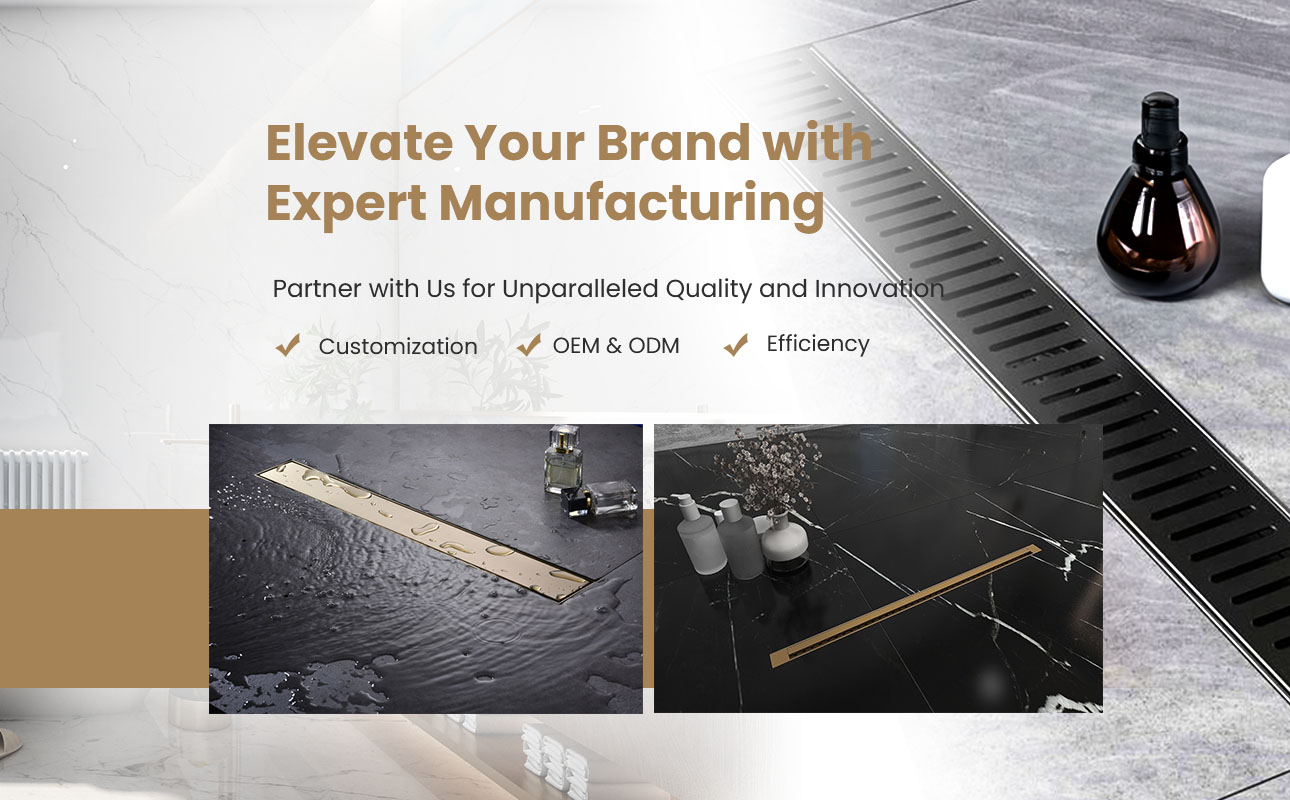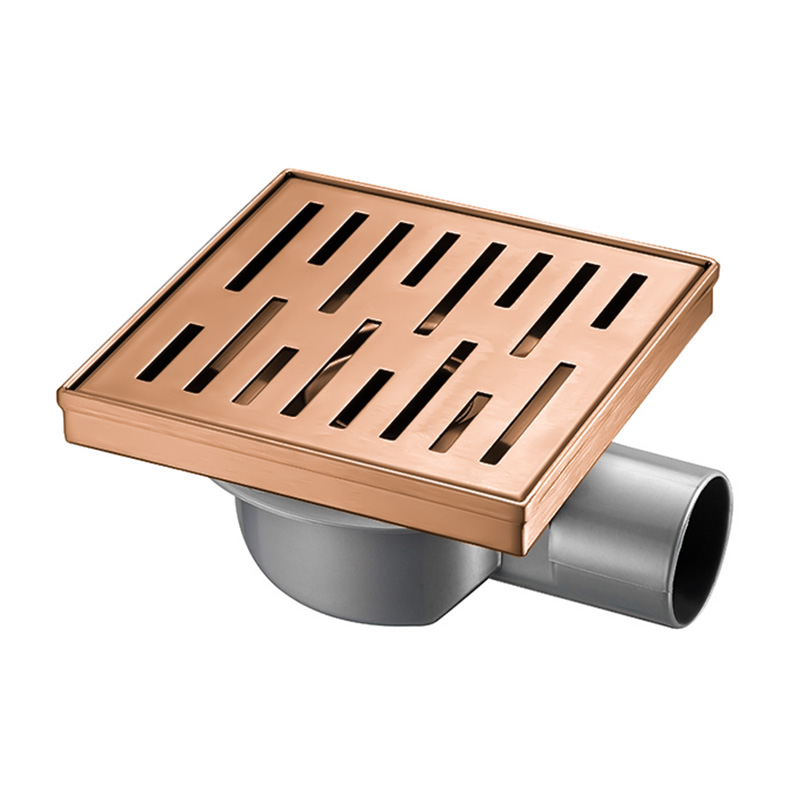How To Make A Shower Drain Faster
A slow-draining shower is one of the most common frustrations in modern bathrooms. Water pooling around your feet, soap residue collecting on the floor, and that unpleasant smell of stagnant water are all signs that your Shower Drain is not performing efficiently. The good news is that improving drain speed doesn’t always require major plumbing work. With the right maintenance, installation techniques, and design adjustments, you can dramatically improve how fast your shower drains.
This guide explains in detail why shower drains slow down, how to fix the problem, and how high-quality stainless steel shower drains help maintain long-term drainage performance.
Understanding Why Shower Drains Become Slow
A shower drain is designed to move water away efficiently, keeping your floor dry and hygienic. However, over time, several factors can affect its performance. Understanding the cause is the first step toward improving the drainage speed.
1. Hair and Soap Buildup
The most common culprit is a gradual accumulation of hair, soap scum, and skin residue inside the pipe. As water flows through, these materials trap more debris, creating a sticky clog that narrows the pipe diameter. Even a small buildup can reduce flow efficiency by up to 70%, according to home plumbing maintenance reports.
2. Improper Slope of the Shower Floor
If the shower floor is not sloped correctly toward the drain—usually around 1.5–2% (about 1/4 inch per foot)—water may pool and drain slowly even without a blockage. This is a common issue in older installations or improperly leveled tiles.
3. Blocked Drain Trap
The drain trap, also known as the P-trap, prevents sewer gases from entering the bathroom. However, it can also collect buildup over time. If the water inside the trap moves too slowly or stagnates, it can create suction resistance, reducing flow.
4. Venting Problems
Every plumbing system needs air circulation. Without proper venting, negative pressure can form in the drain line, slowing down the flow. This problem is harder to detect but can significantly affect overall performance.
5. Inferior Drain Design
A poorly designed drain cover or low-capacity outlet can limit the speed at which water exits. Traditional flat or narrow-grate covers restrict flow compared to modern linear or deep-tray drains like those made by ODO, which feature high-flow openings and improved filtration systems.
Step-by-Step Guide to Make Your Shower Drain Faster
Step 1: Clean the Drain Cover and Strainer
Begin by removing the drain cover or strainer. Hair and soap residue often build up beneath it, acting as the first layer of obstruction. Use a screwdriver to lift the cover, then clean the area with warm soapy water and a soft brush. If residue is stubborn, a solution of baking soda and vinegar can help dissolve grease and soap deposits.
Regularly cleaning the cover prevents clogs from forming at the entry point—one of the simplest ways to maintain fast drainage.
Step 2: Remove Hair and Debris
For more serious blockages, use a drain snake or hair removal tool. Insert it gently into the drain and twist to collect tangled hair or grime. Avoid using sharp metal objects that could damage the pipe walls.
An alternative method is pouring boiling water down the drain to soften soap residue before pulling out debris. This simple practice done monthly can prevent the majority of household clogs.
Step 3: Flush the Drain with Baking Soda and Vinegar
Natural cleaning methods are often safer than chemical products. Pour half a cup of baking soda followed by one cup of vinegar down the drain. Let it fizz for 10–15 minutes, then flush with hot water. The combination breaks down organic material while deodorizing the pipe.
This not only improves flow speed but also prevents bacterial buildup that contributes to unpleasant odors.
Step 4: Check for Standing Water in the Trap
If water remains visible after cleaning, the issue might be a partially blocked trap. In that case, remove the trap section if accessible, clean it manually, and reinstall it tightly. If the trap is sealed under tiles, consider using a plunger to create suction and push the blockage through.
Step 5: Verify Floor Slope and Drain Alignment
Sometimes the problem isn’t inside the pipe but on the surface. Use a small level to check if the shower floor tilts properly toward the drain. If the slope is insufficient, water will linger, giving the illusion of a slow drain. A professional may need to re-level the area or install a new drain design such as a linear shower drain, which handles larger surface water flow efficiently.
Step 6: Use Enzyme-Based Drain Cleaners
If natural methods don’t fully clear the blockage, try enzyme-based cleaners instead of harsh chemicals. These biodegradable formulas contain bacteria that digest organic matter without damaging pipes. Use them overnight and flush with hot water the next day for best results.
Step 7: Replace Outdated Drain Designs
If your drain is still slow despite cleaning, the cause may be the design itself. Modern shower drains, like those from ODO, feature high-flow grates, optimized outlet diameters, and anti-clog filter structures that improve water discharge by up to 30% compared to conventional models.
Modern Solutions: Upgrading to a High-Performance Shower Drain
Sometimes, mechanical cleaning isn’t enough—especially if the original drain design limits performance. Here’s how modern shower drain innovations can drastically improve water flow.
1. Linear Shower Drains
Linear Drains feature a long, narrow channel rather than a small central hole. This allows for faster evacuation of large water volumes, especially in walk-in showers. The larger surface area means less chance of pooling even with low-slope floors. ODO’s stainless steel linear drains are built with a deep channel structure that accelerates drainage while maintaining a sleek minimalist appearance.
2. Deep Water Traps with Anti-Backflow Design
Traditional shallow traps can cause suction drag that slows drainage. Advanced models with deep water-seal structures and anti-backflow systems prevent airlocks while maintaining high-speed flow. These designs also block odors and insects more effectively.
3. Removable Filter Baskets
An integrated filter basket catches hair and debris before they enter the pipe, allowing for easy cleaning. Unlike basic strainers, ODO’s removable baskets are made of fine stainless steel mesh that maximizes drainage capacity while preventing blockage.
4. Multi-Directional Outlets
A major innovation in modern drain systems is 360-degree outlet adjustability, which allows installers to align the drain perfectly with the pipe direction. This eliminates sharp bends that slow water flow.
| Feature | Traditional Drains | Modern ODO Shower Drains |
|---|---|---|
| Water Outlet Size | Small round hole | Large linear slot |
| Flow Speed | Moderate | High-flow optimized |
| Cleaning Access | Limited | Removable basket design |
| Material | Plastic or chrome | SUS304/316 stainless steel |
| Anti-Odor Seal | Basic trap | Deep-seal + backflow prevention |
| Maintenance | Requires frequent cleaning | Tool-free quick access |
As shown, upgrading to a stainless steel ODO drain doesn’t just improve drainage—it enhances hygiene, maintenance ease, and long-term value.
Preventive Maintenance for Long-Term Drain Efficiency
Once your drain is running smoothly, regular care keeps it that way. The following tips will maintain high flow speed and prevent recurring clogs.
Clean Weekly
Every week, remove visible hair or debris from the strainer. A few minutes of maintenance saves hours of repair later.
Use Hot Water Flushes
After each shower session, pouring a kettle of hot water down the drain melts soap scum before it solidifies. It’s a simple habit that keeps the inner surface clean.
Avoid Greasy Products
Body oils, conditioners, and bath products containing wax or heavy oils can congeal in pipes. Try to rinse the drain with warm water after using such products.
Schedule Deep Cleaning
Once every two months, perform a deep clean using a vinegar-and-baking-soda flush or an enzyme-based cleaner to prevent odor and slow buildup.
Inspect for Leaks or Odor
If you notice gurgling sounds or unpleasant smells, check for leaks or dry traps. These can slow down drainage and allow sewer gases to escape.
Importance of Material: Why Stainless Steel Matters
The quality of your drain’s material determines not only its appearance but also its functionality and lifespan. Stainless steel has become the preferred choice for modern shower systems due to its resistance to corrosion, water stains, and bacterial buildup.
Durability and Longevity
Stainless steel, especially SUS304 and SUS316 grades used by ODO, resists rust and wear even after years of exposure to water and cleaning chemicals. Unlike plastic or chrome-coated drains, stainless steel maintains its structure and shine.
Hygiene and Cleanliness
Smooth, non-porous surfaces prevent bacterial growth and make cleaning simple. Stainless steel drains can be easily disinfected without risk of discoloration.
Sleek Design Integration
The minimalist metallic finish complements contemporary bathroom aesthetics. ODO’s designs merge functional engineering with architectural elegance, offering styles suitable for home, hotel, or commercial use.
How ODO Shower Drains Improve Water Flow
ODO specializes in manufacturing advanced stainless steel shower drains that are not only stylish but engineered for optimal performance. Their key advantages include:
High-Flow Grate Design – Engineered outlet grids increase water throughput by up to 1.5 times compared to conventional models.
Deep-Channel Construction – Ensures faster drainage without splashing or overflow.
Removable Inner Filter – Captures hair and debris while maintaining consistent flow.
Anti-Odor & Anti-Insect Seal – Keeps your bathroom clean and hygienic.
Precision-Crafted SUS304/316 Stainless Steel – Corrosion-resistant and durable even in humid environments.
Customizable Lengths and Styles – Linear, square, or point drains to suit any shower layout.
These design innovations ensure that water moves efficiently, reducing the risk of puddling, blockages, or unpleasant smells.
Troubleshooting Slow Drains After Maintenance
If your shower drain remains slow despite regular cleaning, you may be facing a more complex plumbing issue. Here are a few possible scenarios:
Partial Clog in Main Line: The blockage may be deeper in the plumbing system. Use a longer snake or call a plumber for hydro jetting.
Improper Venting: Check if other drains in the house are slow too. Poor ventilation can reduce air pressure and slow water flow across all fixtures.
Pipe Misalignment: Over time, slight shifts in floor or pipe connections can cause uneven drainage.
Old or Narrow Piping: Older homes may have undersized or corroded pipes that restrict flow. Upgrading to a modern drain and wider pipe diameter often solves the problem.
Final Thoughts
A fast-draining shower is essential for hygiene, comfort, and convenience. While clogs and poor installation are common causes of slow drainage, regular maintenance and modern upgrades can make a huge difference.
Simple actions like cleaning strainers, flushing drains, and ensuring proper floor slope go a long way. But for long-term results, investing in a high-quality stainless steel drain system from ODO is the smartest solution. Their precision-engineered shower drains combine advanced flow dynamics, corrosion resistance, and user-friendly design to keep your bathroom performing perfectly.
With proper care and the right equipment, you’ll never have to stand ankle-deep in water again—the water will disappear as quickly as it arrives, just as it should.




